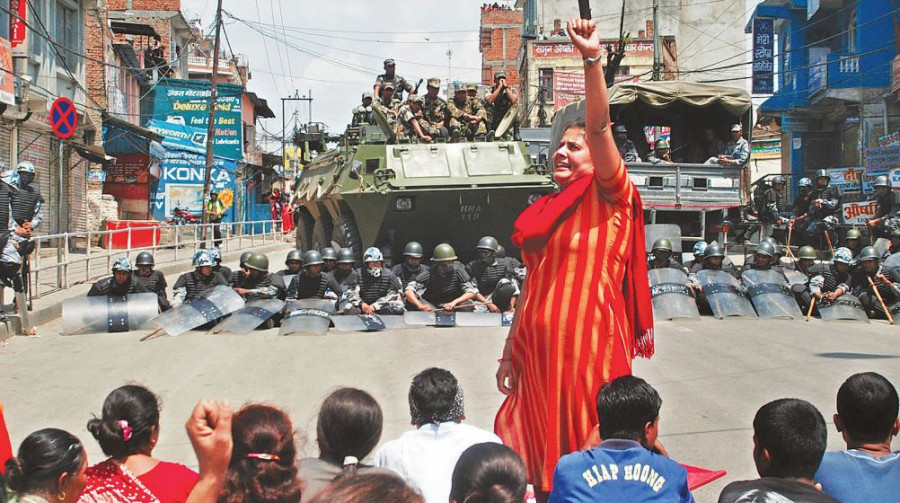Editorial
March to democracy
The country’s experiment with democracy has been a mixed-bag of some progress and signature failures.
Seventy-one-year-ago, the country had its first brush with democracy when King Tribhuvan returned to Nepal from India to declare the end of Ranarchy and the start of multi-party rule. The declaration mentioned holding of Constituent Assembly elections so that people’s chosen representatives would henceforth get to write their own constitution. It wasn’t meant to be. The monarch’s poor health, lack of cohesion among political parties and the authoritarian bent of his son, Mahendra, put paid to that cherished dream. Instead, after eight years of democracy’s establishment, the country in 1959 elected a new parliament. A year and a half later, the new king, Mahendra, dismissed the parliament and assumed executive powers. For another 30 years, the country would be run under the partyless Panchayat rule. But people’s yearning for democratic rights would not die. Democracy was restored in 1990. Then, one thing led to another and in 2008, the country was able to elect a Constituent Assembly and confine monarchy to history. There was also a ‘people’s war’ between all this, taking the lives of 17,000 Nepalis. This is why it is a tragedy that after this long history of struggle and sacrifice, Nepalis are again questioning whether it was worth it.
Earlier, it was convenient for the political parties, the media and even members of the civil society to blame the monarchy for the country’s every ill, from poor development to lack of freedom. The monarchy is now gone but the state of confusion and chaos persists. National politics seems to be focused on how particular leaders get to (and stay in) power—the political parties’ underlying ideologies and the country’s larger good conveniently forgotten. Even those who fought against the state by putting their lives on the line have now learned the dirty tricks of parliamentary politics. Perhaps an even bigger misfortune for the country is that the chief proponents of ‘alternative politics’ today are populist parties that revolve around personality cults, further undercutting people’s trust in the democratic process.
Yet it would also be wrong to single out the political parties and their leaders. They are only a part of the larger society. In this sense, we have all failed in our duties: as citizens, to wisely exercise our adult franchise; as media, to hold the powerful to account; as civil society, to act as a neutral bridge between the state and the people; as businesses, to look beyond profitability. Nonetheless, in these 71 years of political experimentation, we would be remiss not to mention the progress the country has made in terms of building a more free and inclusive society. Many basic services are now available at people’s doorsteps. The country boasts of a vibrant press in a region where the fourth state organ has mostly been cowed into doing the bidding of the ruling elites. Nor have our political parties, unlike in most of South Asia, resorted to open communalism to sow social divisions. The over seven decades of struggle have thus not gone in vain. But as they say, the only alternative to democracy is better democracy. In this long democratic journey, it is worth stopping once a while to take stock of the health of Nepali democracy and exploring ways to make it better.




 16.12°C Kathmandu
16.12°C Kathmandu














